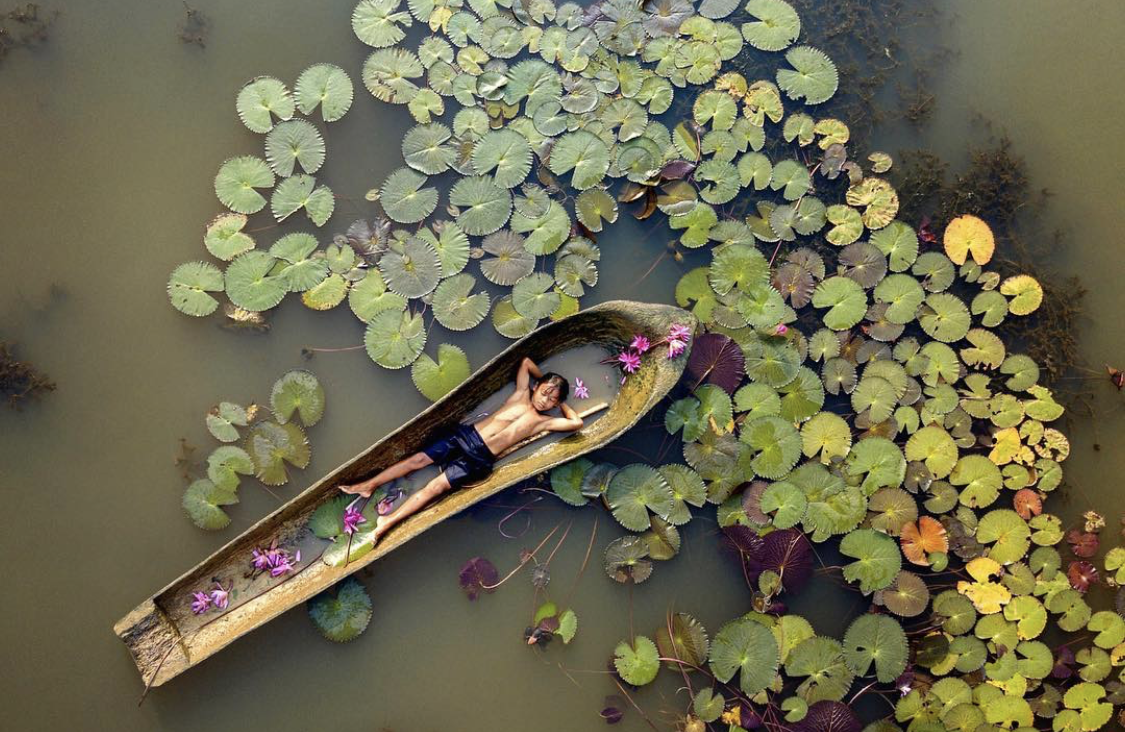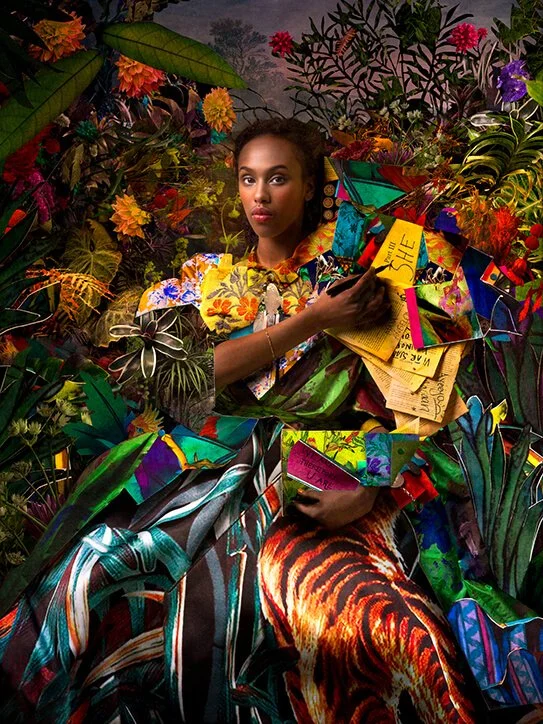Hvad vil du være, når du bliver lille?
We are here to create ROOM for tomorrow for the children who will inherit it. And that ROOM starts with you. In order to envision a ROOM of the future, let’s create the ROOM in your imagination first. Let’s travel back to the child in you. Let’s challenge the adult in you. Let’s touch down on your dream. Ready to play?
Let’s go…
(duration 15-30 min)

Make it stand out
What kind of child are you?
Let’s start by exploring how your dreams and needs are connected to your Inner Child.
Which one(s) do you recognize and what do you need to nurture them?
These are Carl Jung's archetypes of the “Inner Child” psyche, which are archetypes that represent various aspects of childhood and innocence. Some of these archetypes are often used in literature, mythology, and psychology to represent universal patterns of human behavior and experience.
The Wounded Child:
Represents feelings of hurt, vulnerability and emotional scars from childhood experiences.
Needs healing, self-care and a safe environment to work through past traumas and pain.
The Orphaned Child:
Signifies feelings of abandonment, loss and disconnection from others.
Needs connection, love, and a sense of belonging to grow into a more secure and stable person.
The Magical Child:
Refers to a sense of wonder and innocence, and the belief that the world is full of magic and possibilities.
Needs encouragement, creativity, and imagination to nurture its sense of wonder and possibility.
The Nature Child:
Represents a connection to the natural world and a sense of simplicity and purity.
Needs time spent in nature, simplicity and a connection to the natural world to grow and mature.
The Eternal Child:
Signifies a desire to remain innocent and carefree, as well as a refusal to grow up and face responsibilities.
Needs to face reality, responsibilities and develop maturity to grow into a fulfilled and balanced adult.
The Needy Child:
Represents a sense of dependence and a need for love, protection and nurturing.
Needs boundaries, self-sufficiency, and self-care to grow into a more independent person.
The Divine Child:
Refers to an inner child that is pure, wise and connected to a higher power. It represents potential for growth and spiritual awakening.
Needs spiritual practice, self-reflection and self-discovery to develop a deeper understanding of oneself and the world.
Now consider if your own Inner Child could be connected to your purpose for the rights of the children of today and tomorrow. What areas of work would give you a deeper sense of fulfillment?
Please Select 2 Archetype names you feel most drawn to in relation to work and move on to the next question.

Make it stand out
What kind of Game Changer are you?
Game Changers are because of the role they play for the critical mass to change ideas about what is possible. Role models are people that show us that we can create, invent, change the status quo. People like Mandela, Gandhi, Greta and Malala are global household names that have inspired the whole world with their power to change the history of humankind.
In mythology, storytelling and pop culture, "Game Changer" archetypes are characters or events that fundamentally alter the outcome of a situation. The concept of archetypes in storytelling is often associated with Carl Jung, a Swiss psychiatrist and psychoanalyst who founded analytical psychology. Jung believed that archetypes are universal patterns of behavior and personality that are deeply ingrained in the collective unconscious. He saw archetypes as symbolic representations of fundamental human experiences and instincts.
The Hero
A person of bravery, nobility, and selflessness who embodies the qualities that people admire and strive towards. The Hero is often portrayed as the protagonist in a story, embarking on a quest or journey to achieve a goal, overcome obstacles, and save others. This quest requires the Hero to face their fears, confront their inner demons, and prove their courage and strength. The Hero may have help from allies, such as a mentor or love interest, but ultimately must rely on their own determination and inner strength to succeed. In many stories, the Hero symbolizes the triumph of good over evil, light over darkness, and order over chaos. They serve as a symbol of hope and inspiration, representing the best that humanity has to offer. In literature and mythology, the Hero archetype can be seen in characters such as Odysseus, Luke Skywalker, and King Arthur. In psychology, the Hero can also be seen as a manifestation of the ego, representing the conscious self and the qualities and values that define our sense of identity. In summary, the Hero is a classic archetype that represents the protagonist in a story, who embarks on a journey or quest to achieve a goal. This archetype embodies the idea of bravery, determination, and heroism, and is seen as a symbol of the qualities that we admire and strive for in ourselves.
The Dreamer
A person who possesses a rich inner world and an active imagination. This archetype embodies the idea of creativity, idealism, and hope, and represents the power of the human mind to dream and imagine new possibilities. The Dreamer is often depicted as a creative and imaginative individual, who is able to see the world in a different way and bring new ideas and perspectives to the table. They are typically seen as a source of inspiration and hope, representing the idea that our dreams and ideas can shape the world around us. In many stories, the Dreamer is portrayed as being disconnected from the real world, and often pursued by others who seek to use their creative abilities for their own purposes. They may struggle to find a place in the world, but ultimately find success and fulfillment through their imagination and creativity. In literature and mythology, the Dreamer archetype can be seen in characters such as Alice in Wonderland, Don Quixote, and Neo from The Matrix. In psychology, the Dreamer can also be seen as a manifestation of the unconscious mind, representing the deep-seated desires and impulses that drive human behavior. In summary, the Dreamer archetype represents the human desire for escape, transcendence, and self-discovery, embodying the creative, imaginative, and idealistic qualities that are often seen as the best of what humanity has to offer.
The Outlaw
A person who who operates outside the bounds of conventional society and its rules. This archetype is often portrayed as a rebel or a nonconformist, challenging the status quo and subverting the expectations of others. The Outlaw is often depicted as a charismatic and adventurous character, who values freedom and independence above all else. They may reject authority and the strictures of society, preferring to live on their own terms and make their own rules. This non-conformity can sometimes put the Outlaw at odds with the law and those in power, leading to a life of conflict and adventure. However, despite their status as an outsider, the Outlaw can also be seen as a symbol of hope and resistance. They represent the desire for freedom and individuality, and the rejection of oppressive systems and norms. In this sense, the Outlaw can be seen as a champion of the oppressed, standing up against injustice and oppression. In literature and mythology, the Outlaw archetype can be seen in characters such as Robin Hood, the Lone Ranger, and Billy the Kid. In psychology, the Outlaw can also be seen as a manifestation of the shadow side of the human psyche, representing repressed desires and impulses that challenge societal norms.
The Sage
A person who represents a wise, knowledgeable, and insightful character who possesses a deep understanding of the world and its workings. This archetype embodies the idea of wisdom, and represents the importance of knowledge and understanding in our lives. The Sage is often depicted as an elderly and wise figure, who has spent their life studying and contemplating the mysteries of the world. They are typically seen as a source of wisdom and guidance, offering their insights and advice to those who seek it. The Sage is often seen as a mentor or teacher, imparting valuable lessons and skills to those around them. In literature and mythology, the Sage archetype can be seen in characters such as Socrates, Confucius, and the Oracle of Delphi. In psychology, the Sage can also be seen as a manifestation of the unconscious mind, representing the deep-seated desires and impulses that drive human behavior. In summary, the Sage is an archetype that represents a wise, knowledgeable, and insightful character who possesses a deep understanding of the world and its workings. This archetype embodies the idea of wisdom, and is seen as a symbol of knowledge, understanding, and introspection.
Consider which role as Game Changer you feel most drawn to or would like to play?
Now combine your Inner Child name to your Game Changer name to get your personal archetype name. Then move on to the last question.
Make it stand out.
What is your Dream for the Future?
Now it is time to Imagine. In the shape of your Inner Child Game-Changer. It is time to dream up a vision of a place for the next generation.
Takea time-out for a few minutes and drop into your heart. If it helps you can close your eyes. Now imagine the smells, the colours, the shapes. Maybe you don’t know where it is, but you know how it looks. What is special about it? Why? And what is your Role to Play?
Lastly think about what kind of Inner Child quality, you feel most drawn to working with?
Maybe you are a hero who overcame your own childhood trauma and now are ready to mentor others on their own hero’s journey. Maybe you have a specific dream or vision for children, that you wished were there for you, when you were a child. Don’t overthink it, just flow with what comes to mind. Remember, we are just playing….

